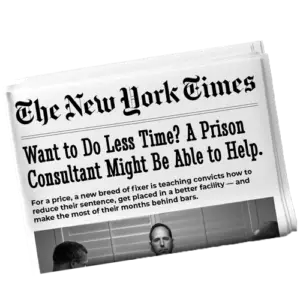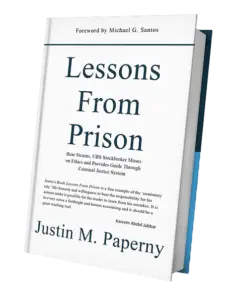In 2008, in a quiet room at Taft Federal Prison Camp, I learned more about Michael’s journey. He had written books, completed his degrees, and was working with professors at universities across the country. None of it happened through email or social media. It was all done with pen, paper, and mailed correspondence.
He told me: “The system isn’t going to reward you because you ask. It’s going to move when your work leaves them with no excuse to say no.”
I thought about that quote when the Bureau of Prisons issued a new directive on May 28, 2025. Director William Marshall III told staff to prioritize home confinement for individuals who do not require the structured support of a Residential Reentry Center. The memo is clear. If someone has submitted a file that shows they have a stable place to live, employment or a release plan, and no need for transitional services, they should be referred to home confinement sooner.
But most people will still stay in prison longer than necessary.
That’s not because of the policy. It’s because their files won’t justify the move.
Michael made that argument years ago. In his 2015 article in the Hastings Law Journal, he wrote:
“Rather than waiting for calendar pages to turn, we should incentivize people in prison to pursue a path that will lead to their emergence as law-abiding, contributing citizens.” (66 Hastings L.J. 1549, 1551)
The First Step Act began to introduce that framework. It allowed individuals to earn time credits by participating in programs. This new memo extends that effort by giving staff more discretion to place people on home confinement sooner—but it doesn’t remove the requirement to document progress.
One of the men in our community had over 200 days of time credits. His behavior was clean. He had no infractions and had completed more than a dozen programs. But when his counselor reviewed his case, there was no job offer, no address on file, and no plan. The answer was simple: “There’s nothing here to justify the move.”
Without documentation, staff are left with risk. Most will not take that risk. Not because they want to keep you in prison, but because you haven’t given them a reason to do anything else.
That’s why we built PrisonProfessorsTalent.com. It’s a platform where people inside can publish their progress. It’s not about visibility for its own sake. It’s about giving decision-makers a file that shows action over time. Program completions, written plans, journal entries, book reports, and letters of support—all in one place. That is what moves names forward.
Michael understood this long before it was accepted. He wrote:
“The sentencing and corrections system fails to offer a mechanism that incentivizes or encourages an individual to atone.” (66 Hastings L.J. 1552)
Now there is a mechanism. The First Step Act and this memo allow for earlier transfer—but the person still has to build the case. The opportunity exists. But the burden remains.
During COVID, the BOP moved more than 15,000 people to home confinement. Fewer than 25 committed new crimes. That is not 25 percent. That is 25 total people. A recidivism rate under 0.002 percent. The data supports this shift. Long sentences and delayed transitions do not lead to public safety. They lead to wasted time and worse outcomes.
Michael warned of this years earlier:
“Recidivism rates show that the longer we expose people to ‘corrections,’ the less likely those people become to emerge as law-abiding, contributing citizens.” (66 Hastings L.J. 1549)
This new memo tries to address that issue. But policy changes are not enough. You have to build the file that proves you should be trusted with more liberty.
Ask yourself:
- Have I submitted a written release plan with confirmed housing?
- Have I documented my program participation?
- Would my case manager have anything concrete to support an early transition?
If not, don’t assume this memo applies to you. Staff need reasons. If you don’t provide them, they will wait.
Michael spent 26 years building a record because the system gave him no alternative. He called for a different structure:
“Effective sentencing and corrections reform would incentivize a pursuit of excellence rather than measuring justice exclusively by the turning of calendar pages.” (66 Hastings L.J. 1563)
That structure is now possible. But no one inside will benefit unless they prepare the file to match the policy.
What have you submitted that makes it easy for someone to say yes?
We’ll walk through what this directive means for you.
Justin Paperny



